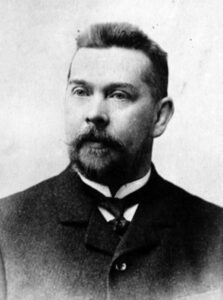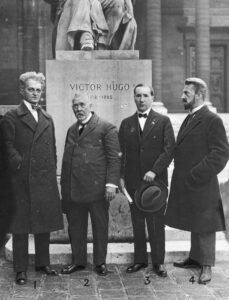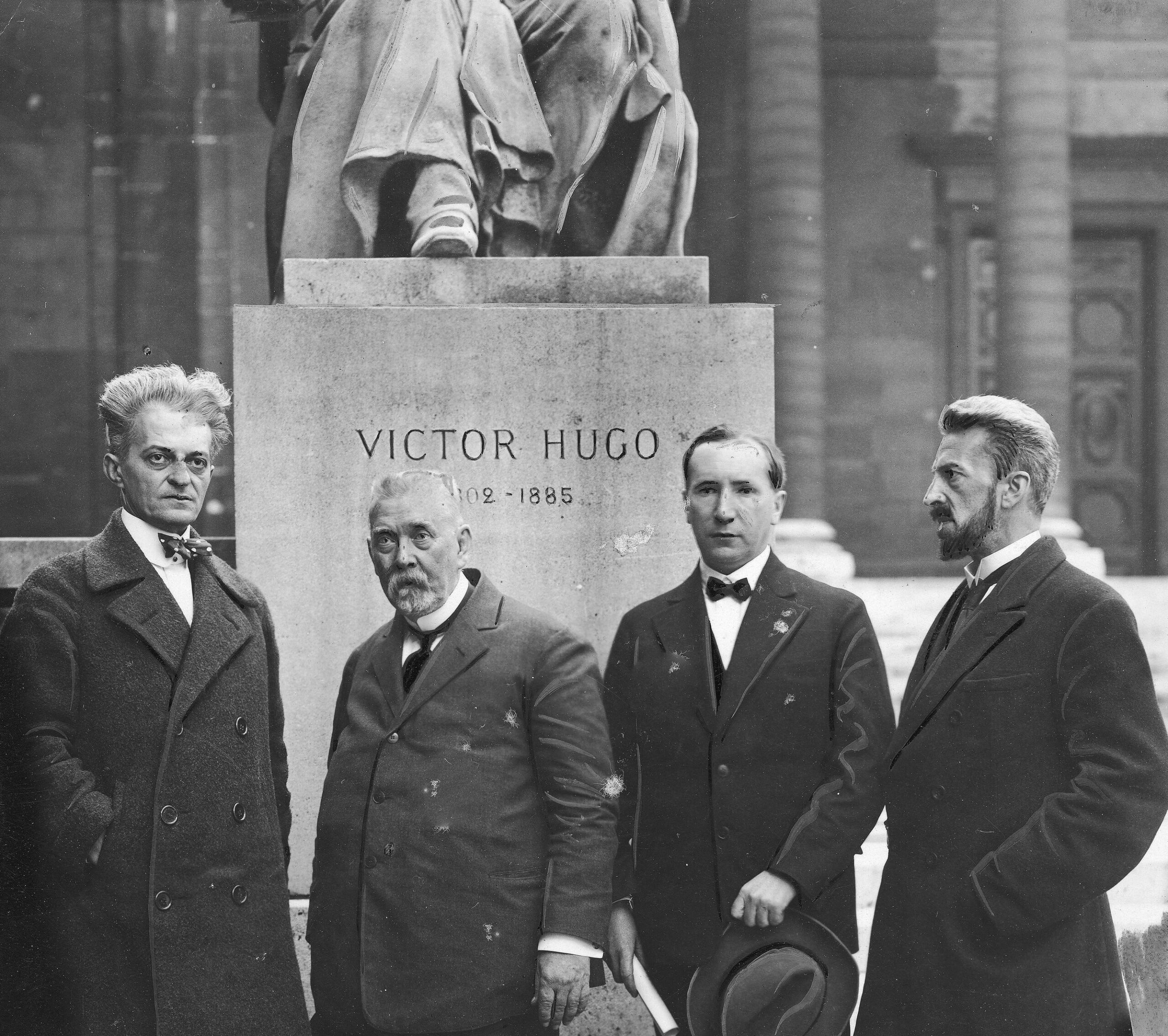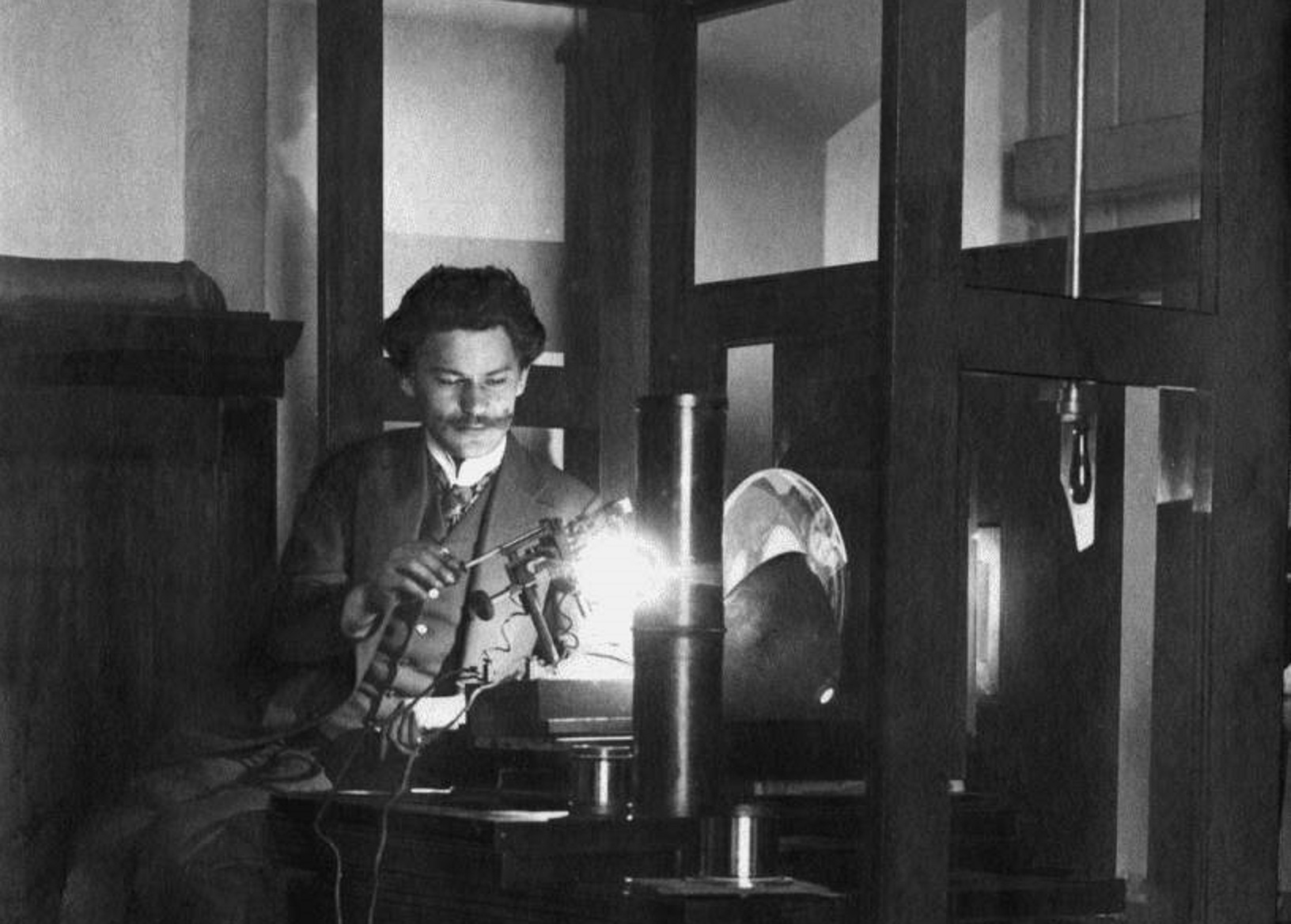The title of “pioneers of cinematography” belongs to the Lumière brothers forever. Film enthusiasts can only bow their heads and take their hats off to their efforts, much like we see the cast doing in scenes from the Arrival of a Train at a Station, one of their first productions. At the same time, however, there were a number of inventors who were heading in the same direction as the French filmmakers, guided by similar intuitions and technical ideas. Among them was Piotr Lebiedziński, designer of one of the first cameras capable of projecting films.
by Piotr Bejrowski
The Polish inventor and entrepreneur was born in 1860 in Sokółka in Podlasie in the Russian partition. He graduated in chemistry in St. Petersburg and then moved to Warsaw. As a young man, he was interested in photography, and was eager to take pictures himself and take part in exhibitions. He soon transformed his passion into a profitable business. At a time when the invention of Louis Jacques Daguerre and its subsequent modifications (including color photography) ruled the imagination of crowds, Lebiedziński specialized in improving the techniques of recording and projecting images. In 1890, Lebiedziński founded one of the first photo paper factories in Europe. He produced his own cameras: in 1896 the “Chicago” camera for the 9x12cm photo format, and in 1904 the “Diops” stereoscopic camera, and high-quality copying papers. The company grew rapidly. Materials created under the direction of Lebiedziński were exported to Berlin, Paris and London and elsewhere. Among the company’s products, the most outstanding was the “bromogravure” paper introduced in 1913, which was characterized by its unique velvety matte black tint. It was not until several years later that a similar quality of material was introduced to the market by the well-known company Agfa.

The Warsaw enterprise, as one of the few in Europe, operated continuously during the First World War. Wytwórnia Lebiedziński, as the limited liability company “Foton”, survived until the outbreak of the Second World War and had stores in prestigious Warsaw locations including on Krakowskie Przedmieście and Nowy Świat. The main technologist of the company was Mikołaj Iliński, who later became famous as the author of popular books on photography and the photochemical industry. The name and traditions of the company were taken over after 1945 by the Warsaw Photochemical Plant “Foton”, which specialized in the production of photosensitive materials primarily for the needs of medical radiology.
In 1895, Lebiedziński constructed a camera and projector able to display an image at a frequency of fourteen frames per second. The cinematograph weighed several dozen kilograms, was operated with a crank and was equipped with one hundred glass plates, which allowed for the presentation of a total of five hundred photos in the form of a thirty-second film. The device, unlike the pleograph of Kazimierz Prószyński’s construction, was not based on the use of flexible film, but on the use of a series of glass plates (the so-called “life photography”). This solution had its strengths and weaknesses, the image quality was relatively high, but the films themselves were fragile and fissured during projection.
Lebiedziński managed to eliminate the shaking of the image (he used two lenses), which obviously does not mean that the first “films” were perfect. Two productions from 1895-1896 have survived to this day. One of them shows dancers dressed in folk costumes performing a krakowiak, a Polish national dance.

Lebiedziński had versatile technical interests. In 1900, he built a photographic recording device for research on the resilient deformations of track for the Warsaw-Vienna Railway. The camera was activated automatically and took photos as the train passed by. In following years, Lebiedziński also worked on improving the phonograph and was the author of such inventions as the “sound head” for recording soundtracks and an “optical shutter for cinematographic devices”. In 1919, together with engineer Stanisław Śliwiński, he constructed a projector called a cycloscope which – as the press at the time reported – allowed him “to reduce the dimensions of the images to the format 18 × 24 mm (instead of the commonly used 85 × 85 mm) without compromising the clarity of the projection, which allowed for placing 8 (or 24) images on one common plate” and let’s add, displaying both moving and still images.
Lebiedziński also worked intensively on the technique of photographing the pupil of the eye. Were it not for the fact that he passed away in 1934, after years of supporting photography enthusiasts, perhaps he would have been the first to eliminate the “red eye effect” caused by rhodopsin in our eyes, and would have thus earned the gratitude of millions of attendees at evening parties.
Read also:Kazimierz Prószyński: a pioneer of world cinematography
Author: Piotr Bejrowski
Translation: Alicja Rose & Jessica Sirotin





